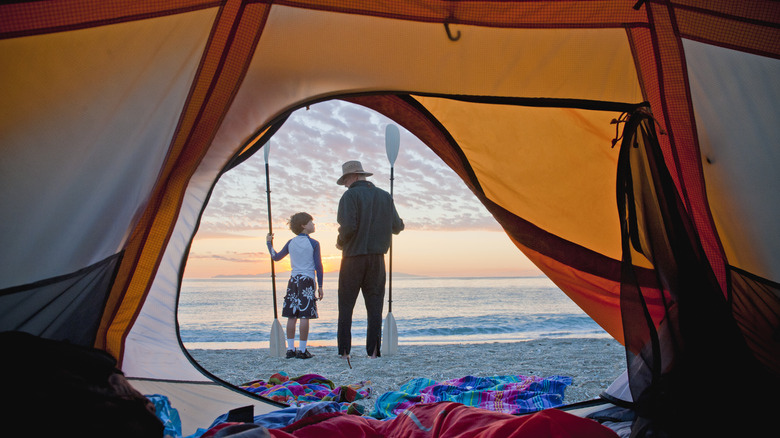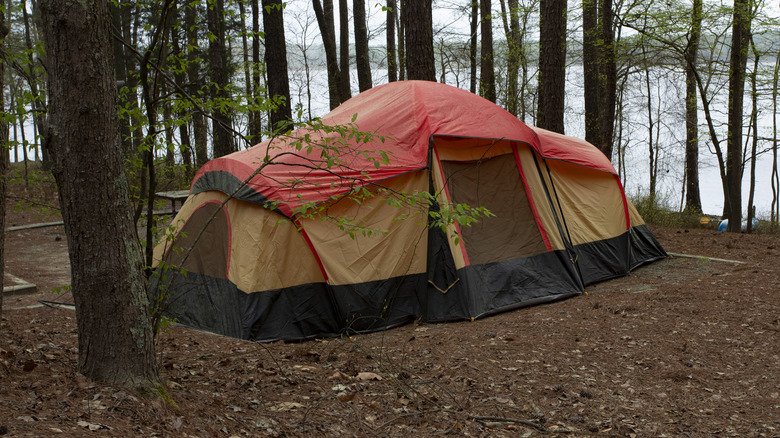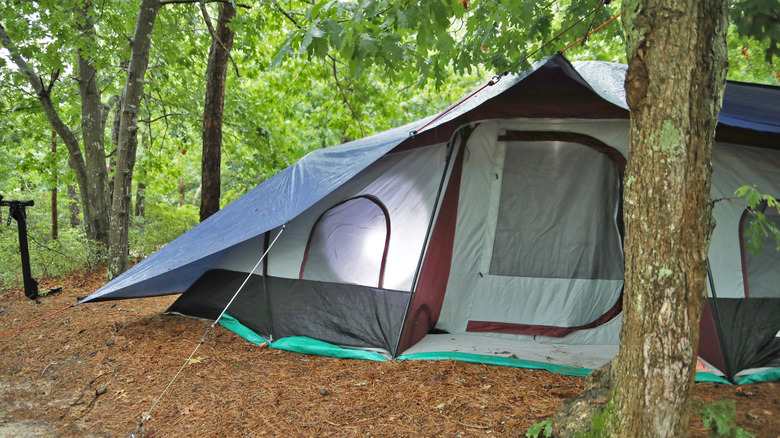Can we just talk about how amazing tents are? Here’s a dwelling made of fabric, which has protected travelers from the elements for thousands of years. By definition, a tent can be set up, slept in, and taken down again, then transported to a completely different place before nightfall. The concept of the “tent” comes in many forms around the world: the North American teepee, the Central Asian yurt, the Bedouin “bayt al-shar,” and the classic A-frame tent, to name a few. Medieval knights slept in conical tents before tournaments and battles, and modern alpinists sleep in bivy sacks only a little larger than themselves. Once you’ve chosen the right tent for your next camping adventure, you’ll feel like you can go anywhere.
But the second young children are involved, tents suddenly feel a lot less miraculous. When kids are rolling around, struggling to sleep, or fighting over inflatable pads, a tent devolves from a cozy wilderness shelter to a suffocating nylon prison. Privacy and personal space cease to exist; even the largest tent is just a big, shared space, with sleeping bags chaotically lined up on the ground. You might as well just sprawl your family out on the floor of your living room and snore in each other’s faces.
There’s a solution to this problem, though, which is the multi-room tent. These structures are the same as regular tents, just a little more spacious and divided into two or more compartments. This way, campers can separate from each other, sleeping in individual “bedrooms.” Families can divide up by age or shared interest, but because the walls are still paper-thin, everyone feels close and included in this outdoor experience.
The best times for a multi room tent (and the worst)
Challenges and care of multi-room tents
The bigger your tent, the more you have to maintain. This includes carrying a large kit, figuring out how to put it together, and taking it down at the end of your stay. If it has multiple doors, each opening increases the chance of bugs sneaking in. Most tents are time-consuming to set up, so they’re only worthwhile if you stay more than one night — a luxury not every family has. After a day or two, tents have a tendency to get messy with misplaced items, tangled bedding, and tracked-in dirt. Meanwhile, the thin walls won’t prevent sound or flashlights from coming through, so rival siblings can still actively pester each other all through the night. Tent camping is a lot less intimidating with a few simple steps, but the more tent you bring, the more you’ll have to worry about.
This is why, when kids reach a certain age, you may end up putting them in their own tent. If you can trust them not to play with matches or wander off at midnight, the distance of a few feet between shelters probably won’t be much different than a fabric divider inside the same shelter. Larger tents can be complicated to put together, so you might actually save time by just putting up two simpler ones. One of the joys of camping is embracing simplicity; it’s up to you whether that comes in the form of one tent or two.




